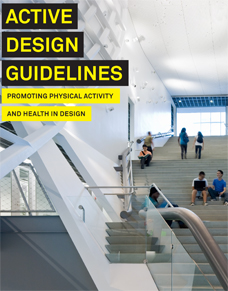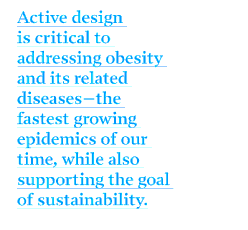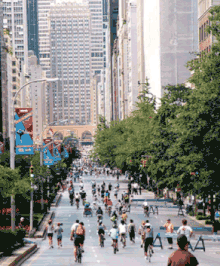 |  | ||||
In the 19th and early 20th centuries, architects and urban reformers helped to defeat infectious diseases like cholera and tuberculosis by designing better buildings, streets, neighborhoods, clean water systems, and parks. In the 21st century, designers can again play a crucial role in combating the most rapidly growing public health epidemics of our time: obesity and its impact on related chronic diseases such as diabetes, heart disease, and some cancers. Today, physical inactivity and unhealthy diet are second only to tobacco as the main causes of premature death in the United States. A growing body of research suggests that evidence-based architectural and urban design strategies can increase regular physical activity and healthy eating. The Active Design Guidelines provides architects and urban designers with a manual of strategies for creating healthier buildings, streets, and urban spaces, based on the latest academic research and best practices in the field. The Guidelines includes: Urban design strategies for creating neighborhoods, streets, and outdoor spaces that encourage walking, bicycling, and active transportation and recreation. Building design strategies for promoting active living where we work and live and play—for example, through the placement and design of stairs, elevators, and indoor and outdoor spaces. Discussion of synergies between active design and sustainable design initiatives such as LEED and PlaNYC. | |||||
| The Active Design Guidelines was developed by a partnership of the New York City departments of Design and Construction, Health and Mental Hygiene, Transportation, City Planning, and Office of Management and Budget, working with leading architectural and planning academics, and with help from the American Institute of Architects New York Chapter. Other City agencies that have contributed to the Guidelines includes the Mayor’s Office for People with Disabilities, Mayor’s Office of Long-Term Planning and Sustainability, Department of Buildings, Department of Parks and Recreation, School Construction Authority, Housing Preservation and Development, and the Department for the Aging. |  | ||||
| Image: Summer Streets, Park Avenue | |||||
| Fonte e imagens: http://www.nyc.gov/html/ddc/html/design/active_design.shtml | |||||
Posso estacionar a bicicleta em segurança?
-
Quem, como eu, usa a bicicleta para se deslocar em Braga, sabe que por
vezes precisa de um local adequado para deixar a bicicleta estacionada em
seg(...)









Sem comentários:
Enviar um comentário